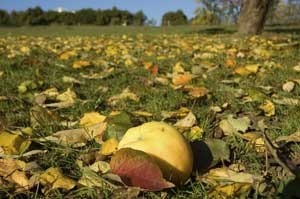
The shorter days and cooler nighttime temperatures of September are once again signaling that the end of another summer growing season is drawing to a close. It's not officially fall yet, but the tail end of summer is certainly here. As our vegetable crops start to dwindle and our summer perennials start to fade, are garden to-do list can get long quickly if we don't keep on top of things.
Harvest Remaining Summer Vegetables: Frequent harvests of your remaining tender vegetables will encourage them to keep producing until the last possible minute.
Plant Cool Weather Crops: Now is the time to squeeze in a second (or third) season of vegetables. Plant a second round of root crops like turnips, carrots, rutabagas and onions. Plant leafy greens like lettuce, kale and spinach now, and keep row covers handy to protect them from coming frosts.
Plant Spring Bulbs: As the weather continues to cool this month, start planting spring bulbs (tulips, crocus, daffodils, anemones, etc.). Shop early for the best selection and purchase the biggest bulbs you can find.
Plant New Perennials: Shop nurseries now for perennial seedlings. Plant them now while the weather is still warm so they have time to establish a good set of roots before winter sets in. Take cues from nature and sow seeds directly into the soil of the perennial flowers that are dropping seeds right now.
Plant Shade Trees, Shrubs, Vines & Cover Crops: Late summer and early fall is the best time to plant many fruit and shade trees as well as ornamental shrubs, vines and cover crops.
Divide Perennial Beds: Divide and transplant crowded perennial beds at least 4 weeks ahead of your first frost date (e.g. Hosta, Day Lilies, Rudbeckia, Iris and Ornamental grasses).
Take Cuttings: Take softwood cuttings from frost sensitive plants and root them indoors until next spring.
Collect Seeds: Continue to collect seeds. Save them for next year, share them with friends and family or trade them with other gardeners.
Test & Amend Your Soil: Perform an end-of-season soil test. Amend your soil as necessary and add compost and fresh topsoil to replace organic nutrients depleted by this year's plants.
Fertilize Flowers & Grass: Apply a low nitrogen fertilizer to flowering plants to promote strong buds and root growth before winter. Apply a slow-release fertilizer that is high in nitrogen to cool-season grasses (Kentucky Bluegrass, Fescues & Ryrgrass) later this month.
Reseed or Over-Seed: The ideal time for establishing new grass (or repairing damaged lawns) is from mid August to late September. Be sure to select a grass variety designed to grow successfully in your particular growing zone.
Clean Up Fallen Fruit: Collect and compost fallen fruit and plant debris. Bag up or burn any fruit and debris that has suffered damage from insects or disease to prevent them from over-wintering in the compost pile.
Compost Leaves: Start raking up fallen leaves and adding them to the compost pile or bagging them up to use for winter mulch. Shredded leaves will compost faster.
Don't prune trees and shrubs: It's still too early. Give them time to slow down and harden off for winter. Late fall and early spring are the best times for pruning. If done now, you'll inadvertently stimulate new growth. That will spell disaster once winter weather arrives.
Don't apply fertilizer to trees and shrubs: Again, it's still too early. Fertilizing trees and shrubs while the weather is still this warm will only stimulate above ground growth. As with pruning, fertilizing in late fall (October) is better for root stimulation.
Don't apply protective mulch: A deep layer of mulch will help protect perennials from winter damage by preventing the freezing and thawing brought about by unstable fall temperatures. Wait until your area experiences one or two light frosts before you apply winter mulch.
Don't dig up tender bulbs: Unless you're danger of a really hard freeze, leave summer bulbs in the ground until their leaves have been killed off by frost. Summer bulbs need their leaves to keep producing food in order to store up every last ounce of available energy before winter. Digging up bulbs when they are dormant also help protect them from damage.
Don't stop watering: Keep to your regular schedule of watering (at least 1 inch per week) until the first hard frost so that plant roots enter winter with sufficient water. Even in cooler zones, fall heat waves are likely.
Don't stop weeding: Any weeds that are left in your vegetable garden and flower beds now will only have time to establish a greater hold by next spring.

About The Author: Ellen Brown is our Green Living and Gardening Expert. Click here to ask Ellen a question! Ellen Brown is an environmental writer and photographer and the owner of Sustainable Media, an environmental media company that specializes in helping businesses and organizations promote eco-friendly products and services. Contact her on the web at http://www.sustainable-media.com
Add your voice! Click below to comment. ThriftyFun is powered by your wisdom!